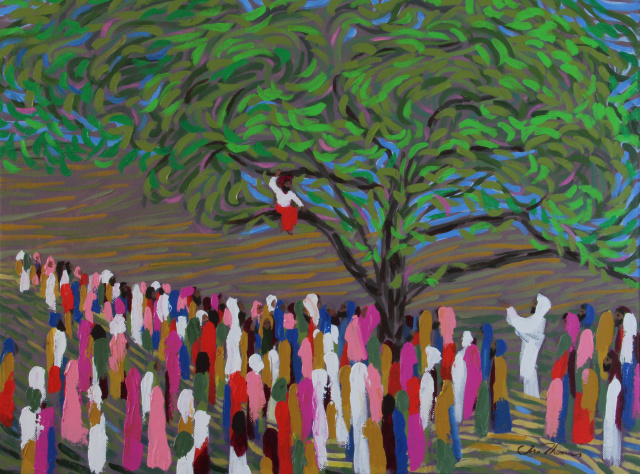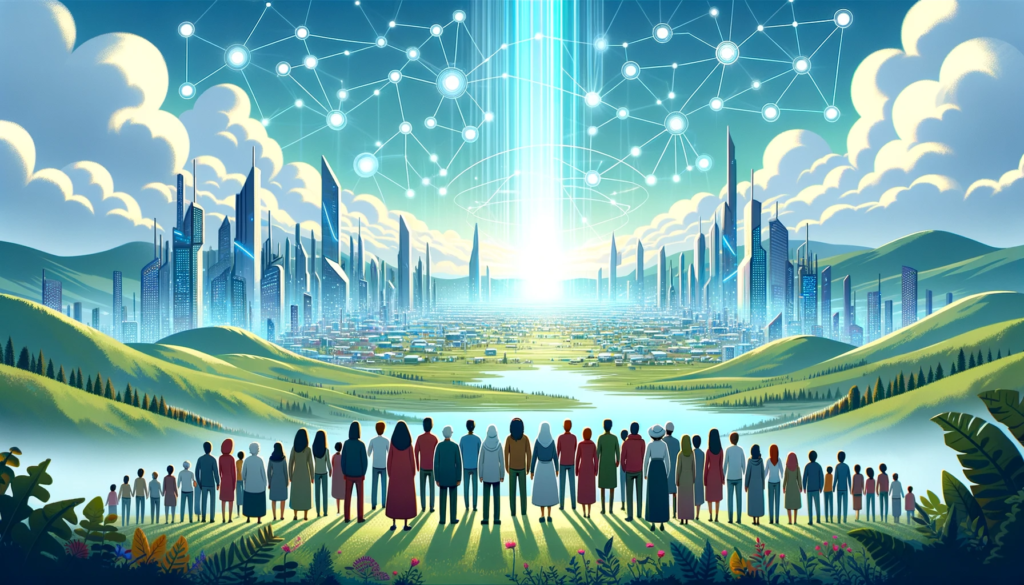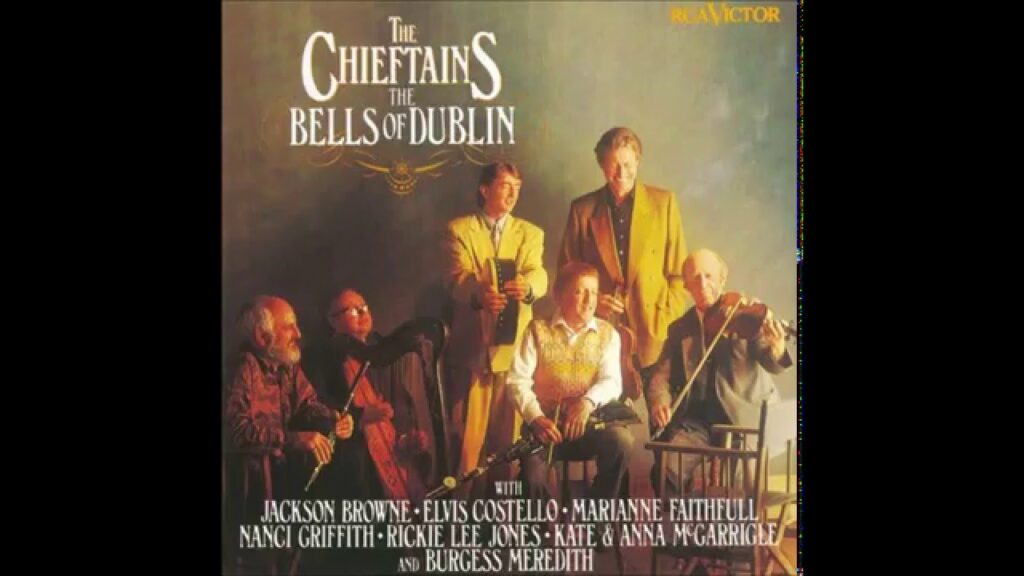In my previous post, The Center of Nine, I argued that the church, along with many other institutions, finds itself in the center of nine intersecting cultural circles. Three sets of three, all vying for our attention, all at once. As a refresher, the industrial age, information age, and augmented age all exist in the same space. Our shared Covid experiences are expressed through traumatic innovation, existential exhaustion, and nostalgic scarcity. Finally, how we commune and belong in community lies at the center of pipeline, ecosystem, and abiding. Three different “ages,” three different covid marathons, and three distinct ways of connecting with each other, all happening at the same time. No wonder we are all exhausted! It’s important to recognize our cultural reality, but what are we supposed to do about it? As communities of faith, how do we navigate these mountainous truths with the canoes of what we think we know?
Have you ever played “connect the dots?” Maybe in an old coloring book or an elementary school laptop or app? You know, where there’s a series of seemingly random dots, that if connected in the right order, offers a picture you couldn’t see before. In this new reality the dots are the same. There are some things that don’t change in our missional work, like personal invitations to gatherings, breaking bread with a neighbor, singing a good song, and offering a captivating message; however many of these dots are being connected in new, and often unfamiliar ways. If we connect these dots in the “right” order, we just might have an exciting, life-giving movement on our hands.
Holding the Both/And Tension of Grief and Excitement
Many faith communities are quite familiar with a both/and reality, especially with worship. Many congregations stream worship online while also having people in the pews (for more on this, check out Jason Moore’s excellent work, Both/And). Think about your weekly offering. On any given Sunday you probably have offering baskets and QR codes for online giving. You probably register attendance with both cards in the pews and google forms on phones. The both/and world is becoming quite familiar, but often overlooked is the responsibility to recognize that both/and is not just about logistics. Living into this tension elicits a pastoral response. Many are feeling left behind with the quickly changing technological landscape, and with this dramatic change there is grief.
One of the most popular gatherings in my congregation is called Burnt Offerings—a mission fundraiser that includes a cooking competition, live auction, live music, and silent auction. The silent auction, one of the top money-makers of the evening, used to be a collection of items in the church lobby, each with a clipboard with names, numbers, and bids. A few years ago we moved the silent auction to be exclusively online via a bidding app. The items were still in the lobby, but you could only bid and pay over your phone. I thought it was an amazing idea. Many were excited about the change, namely our silent auction team. When the deadline for bidding had elapsed we instantly knew who won each item, we didn’t have to fool with collecting checks or making change, and we could send announcements immediately to all participants. Unfortunately, not everyone was so enthused with the technological advancement we had made. In fact, most of the largest bidders weren’t pleased. Many didn’t want to fool with downloading anything to their smartphone, others were concerned with the security of inputting financial information into a third-part application, but the problem really wasn’t about the technology. Removing the clipboards felt like I had removed the participants, themselves, from the experience.
We must hold in tension both the grief and excitement of this new augmented landscape. Many for the first time feel like the church is listening to them. Creating discord servers, developing space in the metaverse, and investing in digital currencies is a means through which the church is serving a new generation, but it shouldn’t be at the expense of those currently in our communities. It’s not about the technology, but it is about the connection (or lack thereof) technologies affords. So, for a time, we need both clipboards and apps, discord bots and good old fashioned phone calls. Is this exhausting? You bet! But there’s not an app on the market that can heal a hurting soul who feels forgotten. We must connect the dots between what technology can do and how technology makes us feel.
The Price of Adaptive Change
Twenty or so years ago there was a church that had experienced their “golden” years: substantial growth, groundbreaking mission, facility expansion, and influential community leadership. The pastor who led during this time of abundance was appointed to another congregation, and with his predecessor came great strife. The next several years offered division, antagonism, and depending on who you ask, great trauma. Since this shake-up, the congregation seemed to find some reason or another to ask the pastor to start packing every four to five years. Why? With each new tenure the next pastor was being asked, explicitly or quietly in the hallways in between meetings, to recapture the past. The incoming pastor’s vision was never enough. It never could be because repeating the past is impossible. It is not an altogether bad thing to desire the best practices of a fruitful time. Connect-the-dots puzzles are a tried and true children’s exercise, but if you’re hoping to find a connect-the-dots book within walking distance from your home at a neighborhood corner news stand, your walk will probably end in disappointment.
Congregations tempted to reclaim past mission and vision are in a particularly difficult context today. As I mentioned in my previous article, we are all running the third great Covid marathon which I call, “Nostalgic Scarcity,” the desire to reclaim the past through already limited resources. Nostalgic Scarcity might be an unfamiliar phrase, but “let’s get ‘back to,’” and “This is how we used to do it,” I’m sure resonate with a slight traumatic tremor. Churches who want to “get back to” are doubling down on creating an environment to enshrine the past. It is my suspicion that our current Methodist talks of separation are the result, in part, of this third Covid marathon. Enshrining the past is not a bad thing, but it is the job of museums, not the calling of churches.
Adaptive change will be waiting for us at the Covid marathon finish line, and with adaptive change there is always a cost. The congregation that seeks new leadership every several years entered into new worshipful practices and the embrace of different experiences, and as a result, the pastor is still there. The cost of adaptive change is often loss. Several church members left when the pastor failed to invest in creating a “get back to” environment; however it seems that the congregation has never been healthier. The worshiping congregation is certainly slimmer, but also more nimble, more missionally engaged, and frankly happy. We must connect the dots between what will bring us into a more fruitful future with the recognition that not everything will join us on that journey.
Yellow is a Silly Color
My oldest daughter is the artist of the family. She had a fascination with color as soon as she was able to doodle and scribble on her own. One day she asked me, “Daddy, why is yellow a silly color?” On the surface “Why is yellow a silly color?” sounds, well, silly. Colors can’t be silly or sad or angry or mad. At least, that’s what we adults tell ourselves. I love that my daughter had already assumed that yellow is a silly color. She wasn’t questioning that. She was wondering why it was the way it was. The beauty of her question is that her four-year-old brain was connecting the dots between color and emotion. She didn’t ask if the connection could or even should be made. She assumed it, and that is precisely what the church of tomorrow must do.
In October 2020, the Disruptors podcast featured an interview with Dr. James Canton, director of the Institute of Global Futures out of San Francisco. He detailed what he believes to be the top five new technologies that will change the world: nano technology, synthetic biology, information technology, neuroscience, and quantum computing. Each one of the disciplines, outside of being incredibly complex for this pastor’s brain to comprehend, in their own individual way can radically change how we think, do, work, and play. His point is not about the technologies themselves, but the importance of how these technologies have to work together. It’s not enough to have a quantum computer, but having a quantum computer connected with neuroscience might help us solve incredibly complex issues like Alzheimer’s. Nano technology is one thing, but connecting nano technology with biology would revolutionize surgery and delivery of medicine.
As I mentioned in my previous piece, discipleship continues to move into a more personal and isolated place. From linear pipeline to ecosystem to personally abiding, discipleship is becoming more siloed to the individual at the expense of community. There’s nothing wrong with crafting a specific and meaningful pathway for those searching for Christ, but the church must always be about bringing community together. Sometimes that means knowing that yellow is a silly color. In other words, the children’s ministry director might be the perfect person to lead the building campaign, or sometimes sermon prep is best done at the food pantry. Even better, what dots are being connected outside of the church from which the church can learn. Neighborhood cookouts, fitness classes, community college festivals, etc. What connections need to be made that aren’t immediately obvious?
The good news is that as leaders in the church we are not called to be innovated, witty, or clever. We simply need to be where the people are. We need to connect the dots between the excitement of innovation with the sorrow of grief. We need to connect the dots between the fruitfulness of moving into the future with the loss from adaptive change. We need to connect the dots between innovative technology and the people the technology should serve. When we appropriately connect the dots we will see the shape of a cross. It may have been hard to see at first in the midst of exhaustion and rapid change, but it is our faith that it is there. How are you being called to connect the dots?










